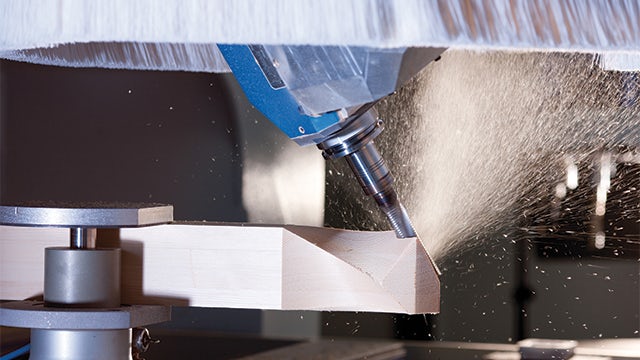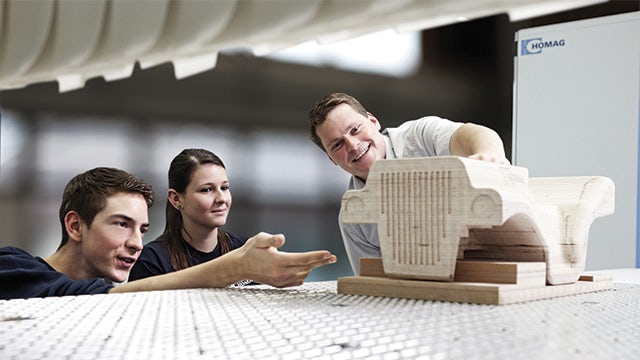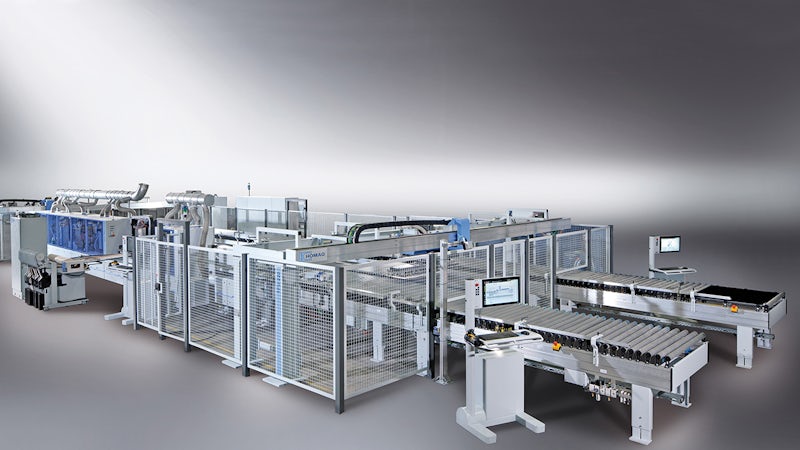Homag AG gains processing precision with testing solutions from Siemens Digital Industries Software
Simcenter software solution enables the global manufacturer to create high-speed milling machines for the furniture industry
Homag
As a global player, Homag operates international production plants as well as sales and service companies. With around 6,000 employees, the company has a presence in more than 100 countries and an estimated global market share of just under 30 percent. Customers use high-tech machines and systems from
the Homag Group to produce home and office furniture, kitchens, parquet and laminate flooring, windows, doors, staircases and even complete prefabricated timber-frame buildings.
- Headquarters:
- Schopfloch, Germany
- Products:
- Simcenter Products, SCADAS Mobile, Simcenter Testlab
- Industry Sector:
- Industrial machinery
As we prepare to embrace Industry 4.0, move away from mass production and dive deeper into tailor-made solutions for specific applications, we work hard to detect potential errors and correct them at the source. We also know that to achieve our goals, we need good partners and good solutions, and Siemens PLM Software delivered the right ones for us.
Homag AG
Homag AG (Homag) is a global supplier of machinery and equipment for wood processing for the furniture industry. With an estimated 89 percent of business dedicated to the wood processing sector, and as a preferred supplier to one of the largest and best-known furniture makers, Homag relies first and foremost on the quality of its machines.
For industrial machinery manufacturers such as Homag, business success depends more than ever on their capability to bring to market high-quality end products that differentiate from the competition within the shortest possible timeframe. With wood panels distributed worldwide that are eventually used to build safe, comfortable and good-looking furniture for offices or households, Homag needs to ensure that its milling machines hit the right spot. The goal is to enable a smooth assembly at the destination and to achieve high customer satisfaction.
The demand for furniture is high, and so are the expectations in terms of quality, appearance and feel. “What our customers ask for is a combination of excellent design along with comfort and versatile functions. They want office or home furniture that displays a surface finish with a high-quality look and feel,” says Peter Dettling, product architect at Homag.
In this context, companies have no choice but to rise to the challenge. Therefore, they have to adapt and program their machines to run faster. But the faster the machines are, the greater the risk that the excitation forces coincide with the resonance of specific machine components. This causes vibrations that lead to inaccurate milling and ultimately affect quality ‒ a risk that Homag cannot afford.
To maintain process accuracy while increasing production speed on its machines, the company turned to Siemens Digital Industries Software for advice. After observing the benefits of modal analysis and testing in pinpointing faulty components, Homag decided to use it to identify the source of the problem.

Enhanced controllability with modal analysis
Balancing quality with production speed and energy efficiency is critical, and can only be obtained by using an integrated engineering platform capable of handling noise, vibration and durability attributes.
“When you set a goal to increase the operating speed, you know that issues may come up along the way and the quality may suffer,” says Dettling. “Our goal is to deliver machines with exceptional capabilities that make life easier for customers, machines that allow the customer to produce fast and reliably. And understanding the vibration characteristics of the elements is an essential part of the process.”
In a complex structural machine configuration, increased speed changes the dynamic characteristics and therefore the usual functioning of the components, but it is difficult to identify exactly which part of the machine is at fault. In order to avoid guesswork when trying to solve noise and vibration issues, one result-driven technique is the source-transfer-receiver methodology developed by Siemens Digital Industries Software to capture noise and vibration performance.
Modal analysis refers to a complete process used to identify how specific components in the machine transfer the energy from source to receiver. It includes both an acquisition phase and an analysis phase in which the structure is excited by external forces such as an impact hammer or shaker. The most practical way for the machinery industry is to perform impact testing using Simcenter Testlab™ software, part of Siemens Digital Industries Software’s Simcenter™ portfolio, as it is a fast and efficient way to measure frequency response functions.
Homag went through this process with Siemens Digital Industries Software and the results showed that a critical component supporting the structure that was cutting the wood panels was experiencing resonances due to the increased speed of the machine.
The company adopted modal analysis and testing using Simcenter SCADAS™ Mobile hardware for data acquisition and impact testing. Based on this method and tool, every component’s behavior is scrutinized after being hit with the impact hammer. With accelerometers placed at different locations when hitting the structure, modal analysis helped identify at which precise frequency the tested machine support was shaking more than it should have.
By using the source-transfer-receiver method, a specific approach in noise and vibration testing, engineers can quantify and rank the various phenomena that cause the issue, and discover possible solutions immediately. The source-transfer-receiver methodology separates the components that cause the problem from those that amplify it. Any noise or vibration problem is traced back and broken down into two points of investigation: the excitation source and the design sensitivity of specific components to the excitation.

Modal analysis – a valid investment in the long run
Modal testing and analysis are vital applications for physical prototype testing. Homag has adopted testing its machine prototypes carefully looking into potential weak spots where vibration occurs and what causes them, and analyzing the overall functioning of the components to make sure they are performing in perfect condition. This process reduces the total production time of the machine to be released to the market and enables dynamic and flexible milling, cutting and fitting.
These modal testing and analysis applications, supported by Siemens, are also particularly useful in the design process, enabling design engineers to contribute to product improvement by early identification of the root cause of any problem. It is then easier to establish a reliable and sustainable design practice for next-generation products while identifying design weaknesses of the current approach. Modal testing and analysis bring invaluable contribution to seamless integration of data into structural dynamics simulation. All in all, this type of expertise delivered by Simcenter testing products and solutions made Homag shorten the loop between test and simulation, reducing the time otherwise invested in frontloading, testing the prototype and delivering the final product to the market.
Homag engineers were happy to find a comprehensive testing solution that is easy to use and enables an extensive range of functions and performance. The Simcenter SCADAS Mobile hardware and Simcenter Testlab software coupled with in-depth modal testing and analysis also offered the capability to create templates that allow re-use of the same procedures for repeated measurement.
“We are a pioneer in wood processing,” says Rolf Hofbauer, calculation engineer (CAE analyst) in the Basic R&D Calculation and Simulation department at Homag.
“As we prepare to embrace Industry 4.0, move away from mass production and dive deeper into tailor-made solutions for specific applications, we work hard to detect potential errors and correct them at the source. We also know that to achieve our goals, we need good partners and good solutions, and Siemens Digital Industries Software delivered the right ones for us. The modal analysis and testing they skilfully provided was a huge benefit for us and our customers. In our industry, this translated into processing wood and wood materials efficiently, economically and with a high degree of precision.”
Homag believes that the interaction of measurement, simulation and product development will become even more important in the future. In this context, the company appreciates that the Simcenter testing solutions will continue to bring a tremendous contribution by helping to reduce costs and time and boost production.
